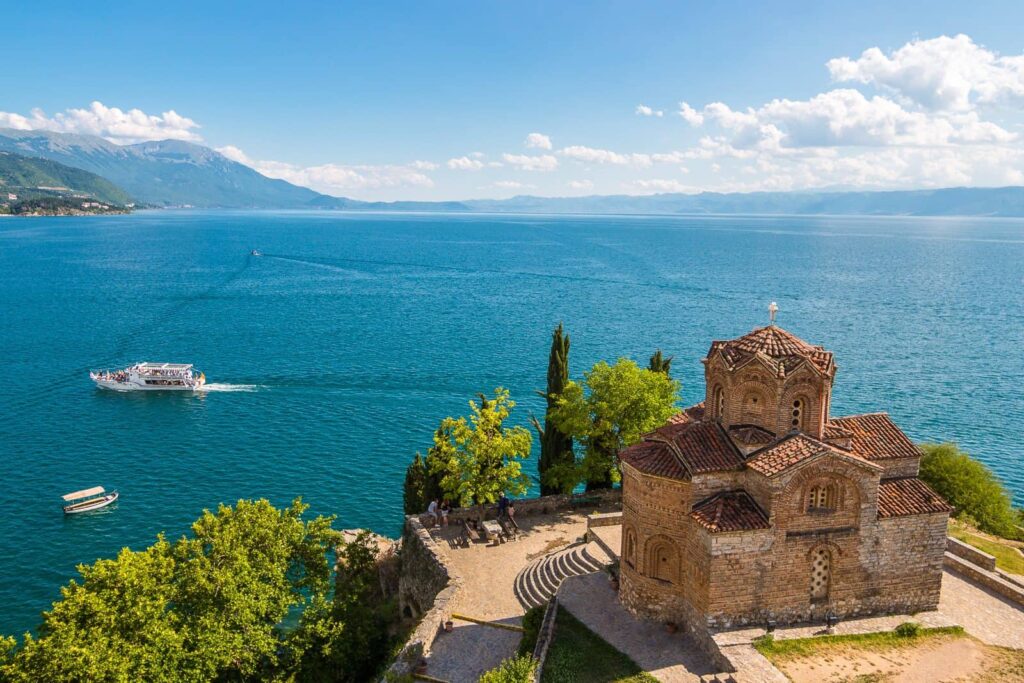The Balkans has seen a tumultuous history with numerous major conflicts going on throughout the continent. It is, nevertheless, an appealing travel destination for outdoor enthusiasts looking for adventure and new experiences.
You’ll feel like you’ve been transported to a different world when visiting the Republic of Macedonia, which features stunning ancient cities, stunning monasteries perched on hilltops, gorgeous mountains, forests, and lakes. You’ll love the hearty food and traditional folk music in this mountainous country with hundreds of kilometers of coast on both the Adriatic and Black Seas. Let’s take a look at what makes the Balkans so appealing.
Where are the Balkans located?
Table of Contents
The Balkans is a geopolitical term used to describe Europe’s major eastern peninsula, which includes Yugoslavia, Albania, Bulgaria, Romania, Moldova and parts of Greece and European Turkey. However, not everyone accepts this definition. Some people use historical and cultural criteria to determine membership; thus, just Bulgaria and the Former Yugoslavian nations are included. It might refer to any or all of the aforementioned countries if you hear the word “Balkans.”
Where to Go in the Balkans?
The Balkans has various attractions for visitors of every type. Croatia’s mainland is 1,777 kilometers long (1,104 miles), with 1,246 islands in the Adriatic. On the other hand, Bosnia is a tiny country with only a few kilometers of the coast but makes up for it by offering mountains, rivers, and canyons.
There’s also a lot of history in this region, with Roman, Byzantine, Ottoman, and Yugoslavian influences among others. To appreciate the complex Balkan history, take the time to learn about the complicated tale.
Consider a Balkan tour that includes Bulgaria, Macedonia, Serbia, Kosovo, Bosnia, and Montenegro, as well as Croatia. Albania is also worth seeing. Favorites include Macedonia’s Skopje and Lake Ohrid, Montenegro’s Bay of Kotor, Serbia’s Nis and Belgrade (both in Serbia), Bosnia’s Sarajevo, and Mostar (in Bosnia), and Croatia’s Dubrovnik.
Check out Plovdiv in Bulgaria, Kosovo’s Pristina and Prizren, Banja Luka in Bosnia, and Albania’s Tirana, Duress, and Berat if you’d want a more off-the-beaten-path experience.
How to Travel to the Balkans?
The easiest approach to get into the Balkans is by air. There are several airports served by European budget airlines, including Wizz Air, which connects to numerous locations throughout Europe. Finding a cheap flight to Sofia (Bulgaria), Skopje (Macedonia), or Tuzla (Bosnia) should not be difficult.
The bus or train are the best methods to visit the Balkans. Getting around is simple, but it can be difficult for someone without prior knowledge. Although prices seem relatively cheap, you should expect to pay at least US $10 for a one-way ticket.
If you’re crossing a land border, you may or may not receive an entrance or exit stamp; however, this seldom causes delays.
Difficulties You May Encounter While Travelling to Balkans
Finding trustworthy information on schedules, prices, and departure points is one of the most difficult aspects of Balkan travel. Information on the internet is difficult to come by and even then, may not be trusted. The station’s timetable may or may not be up to date.
The driver usually requires you to purchase tickets from the station on the day of departure or ahead of time, and then gives them to you. Keep in mind that certain routes charge a fee for baggage storage.
For the novice in the Balkans, this might all be perplexing. However, there is a simple solution that always works. The majority of visitors, according to my experience, fail to do it and become dissatisfied. All you have to do is write the destination name in either Latin or Cyrillic, the date and time you want to leave, and the price with a question mark, and show them the day before.
Give them a pen and paper. If the time or price is incorrect, they will correct it, and you will have your response. Inquire if they can speak English; if yes, be as direct as possible. If not, trust in your document.
Safety Tips To Travel in The Balkans
Is it safe to visit the Balkans? Yes, you can. Despite the region’s negative reputation for violence and conflict, the Balkans no longer wage war. whereas ethnic conflicts exist and protests are common, you won’t usually encounter problems. You must need some of the major travel accessories to make your trip easy.
But don’t worry, the Balkans are safe. There have been no attacks like those in Western Europe that have become more common. And people you come into contact with will show you warmth and hospitality.
Conclusion
To sum up, the Balkans are a great travel destination, offering a wide variety of landscapes, activities, and experiences. The people are hospitable and the scenery is beautiful. Traveling to the Balkans is safe and easy, with plenty of options for transportation and accommodation. Keep these tips in mind and you’re sure to have a great time on your trip to the Balkans!

